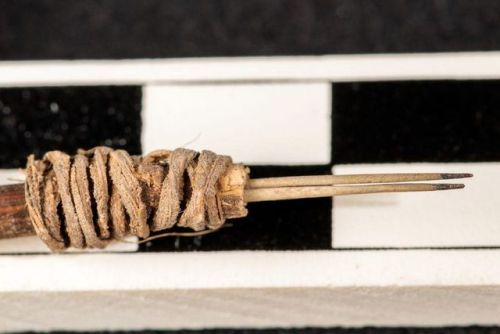
Thanks to a small stick with two cactus needles on its end, we know that Native Americans in the southwest USA were tattooing each other as early as 2,000 years ago. Which is much, much earlier than previously believed. The artifact in question is made of a sumac twig handle, two small prickly pear cactus spines, and yucca-leaf trips to hold the spines on the handle.
If you look closely you can see that the tips of the needles are stained with a black pigment. Analyses show the pigment matches the proper depth to pierce and stain the epidermis. This was not a first, fumbling attempt but a workable tool, one that was used before it was eventually thrown away.
The artifact comes from a midden heap at the Turkey Pen site near Bear Ears National Monument, which was occupied by the Ancestral Puebloan civilization from roughly 50 BCE to 200 CE. It is the first evidence that the Ancestral Puebloan peoples practiced tattooing.
Elsewhere in the world, the rise of tattooing is associated with agriculture and increases in population. Ancestral Puebloans were undergoing just such a population increase when the tool was made. Archaeologists on the project speculated, therefore, that community members’ tattoos may have strengthened a sense of social identity, as the world quickly changed around them.
Nenhum comentário:
Postar um comentário